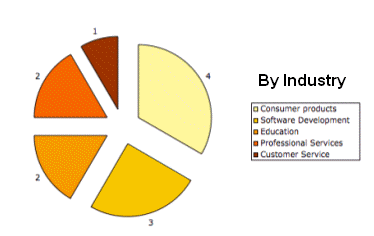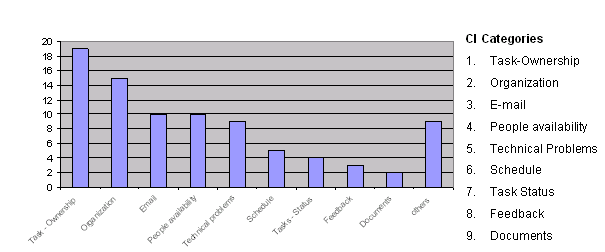Contextual Inquiries
The best way to learn about the communication needs of Knowledge Workers is to observe them at work. Contextual Inquiry is an observational method that gathers data from users while they work to gain insights into their environment, tasks, cultural influences at work, and to understand the breakdowns in their current processes.
We observed three project groups and twelve individuals over the course of three weeks during group meetings and at their office locations. Within groups, we also conducted individual follow-up interviews. Subjects ranged in age from early twenties to late fifties and their professional work experience ranged from one year to over twenty-five years. Over half of the interviewees collaborated with remote workers or worked remotely themselves. We made a concerted effort to interview Knowledge Workers from both commercial and academic settings to gain a broader scope of user data.

For our observations, we decided to focus on email as the main source of tasks for Knowledge Workers. Our contextual inquiries took the form of an artifact walkthrough, where we asked users to walk us through their process for identifying and tracking To-Do items from their email Inbox, calendar, and/or day planner. By having the artifacts in front of them, users were able to remember concrete examples of when and how they used an artifact and it also gave us the opportunity to validate our interpretations with the user. This allowed interviewers to gain a better understanding of the user intents behind a behavior.
From our contextual inquiries, we identified 87 key observations and breakdowns that highlighted opportunities for increased task visibility, project visibility, and awareness of who's doing what. We grouped the items into categories using an affinity diagram, and these nine categories became the foundation for our design vision.


